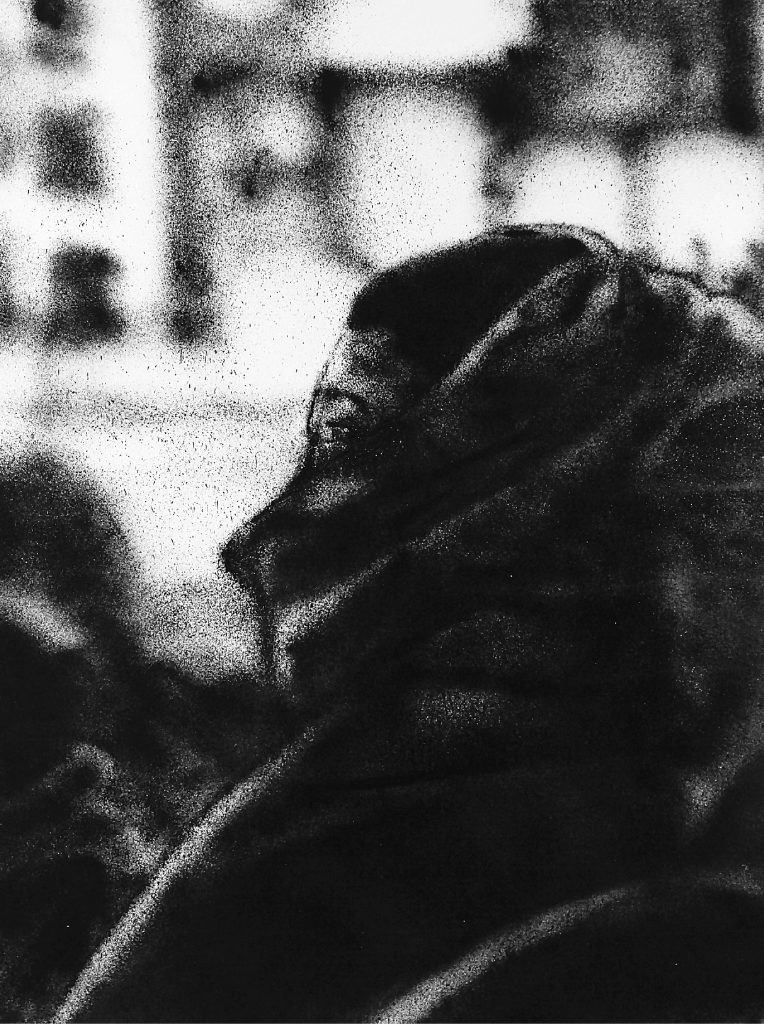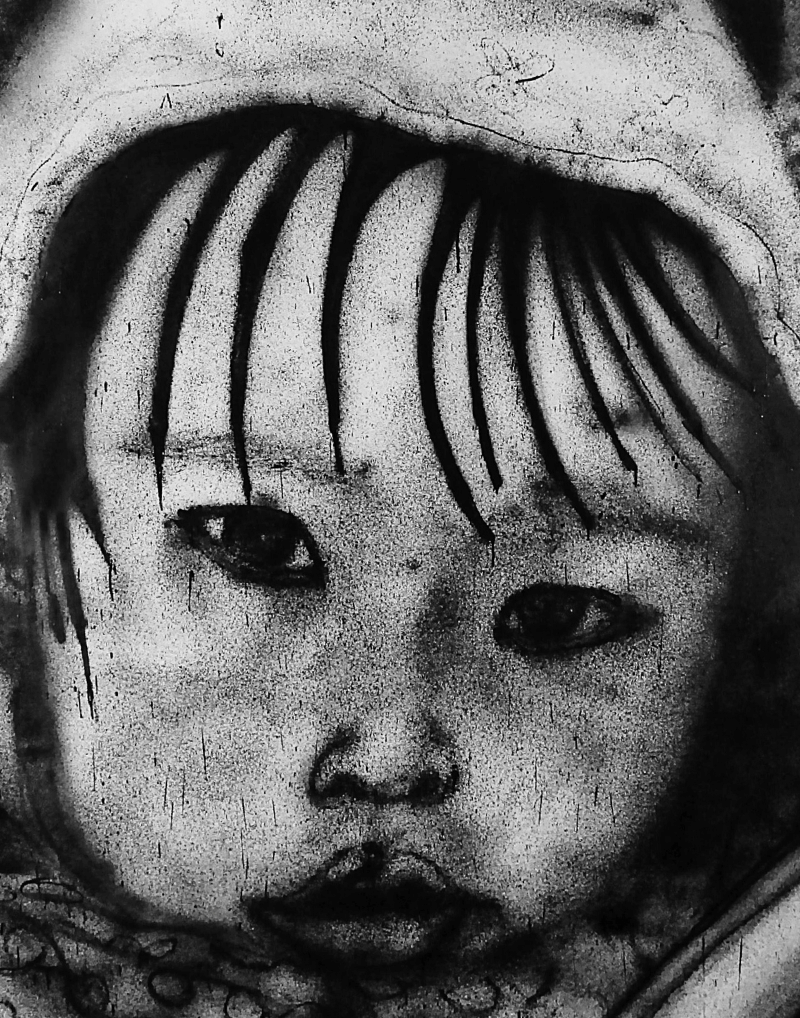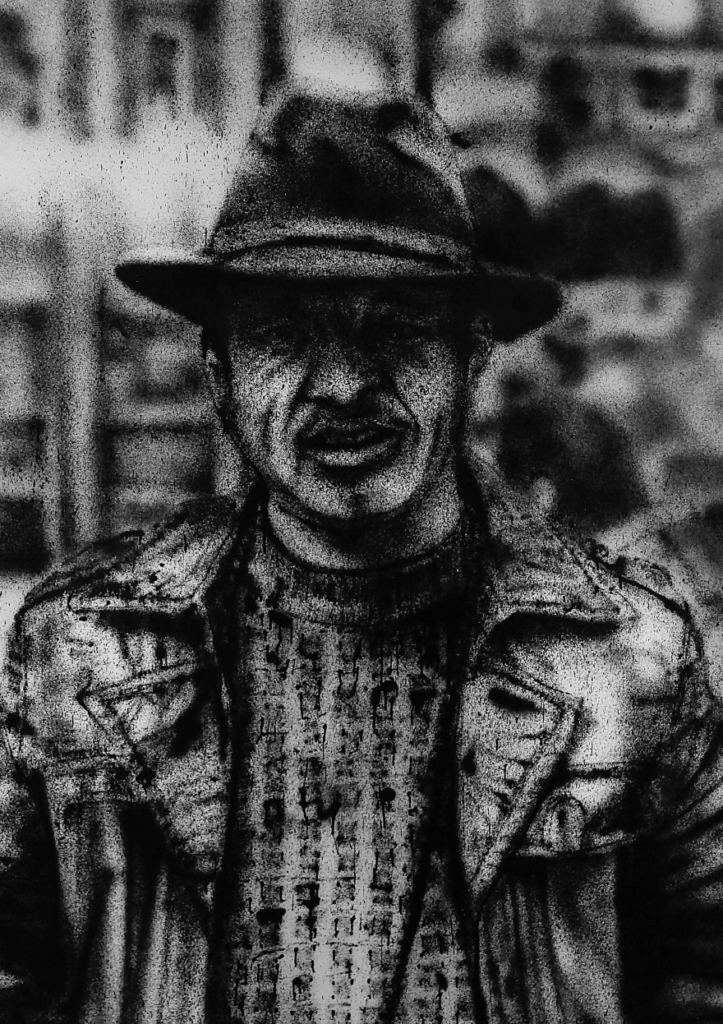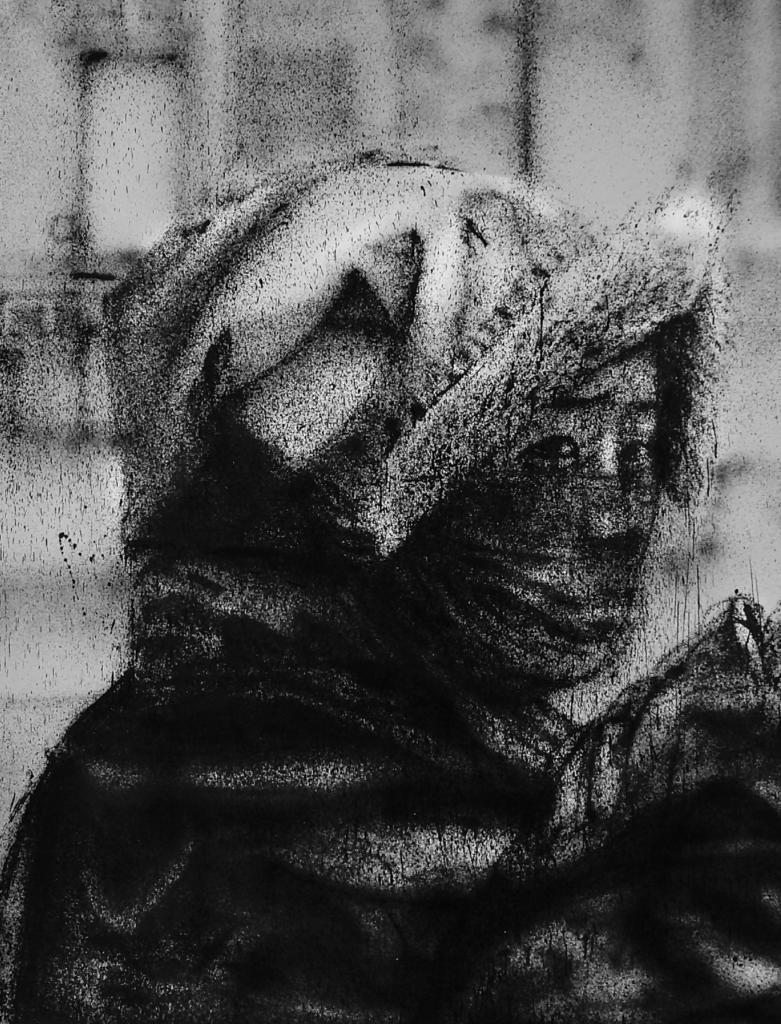2017 l Camera Obscura
“Camera Oscura” features seventeen freehand portraits of Tibetans, painted using a black spray can on white canvas. These portraits are based on photos taken in Kangding, Sichuan.
In May 2017, I attended an artist residency in Chengdu. Despite local police restrictions, I managed a ten-day visit to the Tibetan region, where visas are tightly controlled. This area is part of Xi Jinping’s “One Belt, One Road” initiative, aiming to revive China’s historical prominence, including a new Silk Road.Chengdu, with its 9.2 million residents, seeks international cultural integration while under strict government control. The new infrastructure, including a train line and freeway, will connect Poland to Beijing through Tibet, bringing more tourists. Currently, Tibetan villages are isolated, accessible only by dangerous roads. This development coincides with the Sinicization of Tibet, where locals face displacement, cultural erasure, and government surveillance.
“Camera Oscura” captures the vanishing customs of Tibetans, serving as a metaphor for the darkroom, freezing moments of a disappearing culture. My Bangkok studio continues this work, blending childhood dreams with a sense of nostalgia. While I appreciate Chinese culture, it’s essential to highlight the cultural erosion resulting from progress.
A friend in Chengdu believes China’s actions benefit Tibet, pointing out the complex reality where ancient cultures are at risk amid geopolitical influences. My portraits aim to preserve the essence of these endangered cultures.




